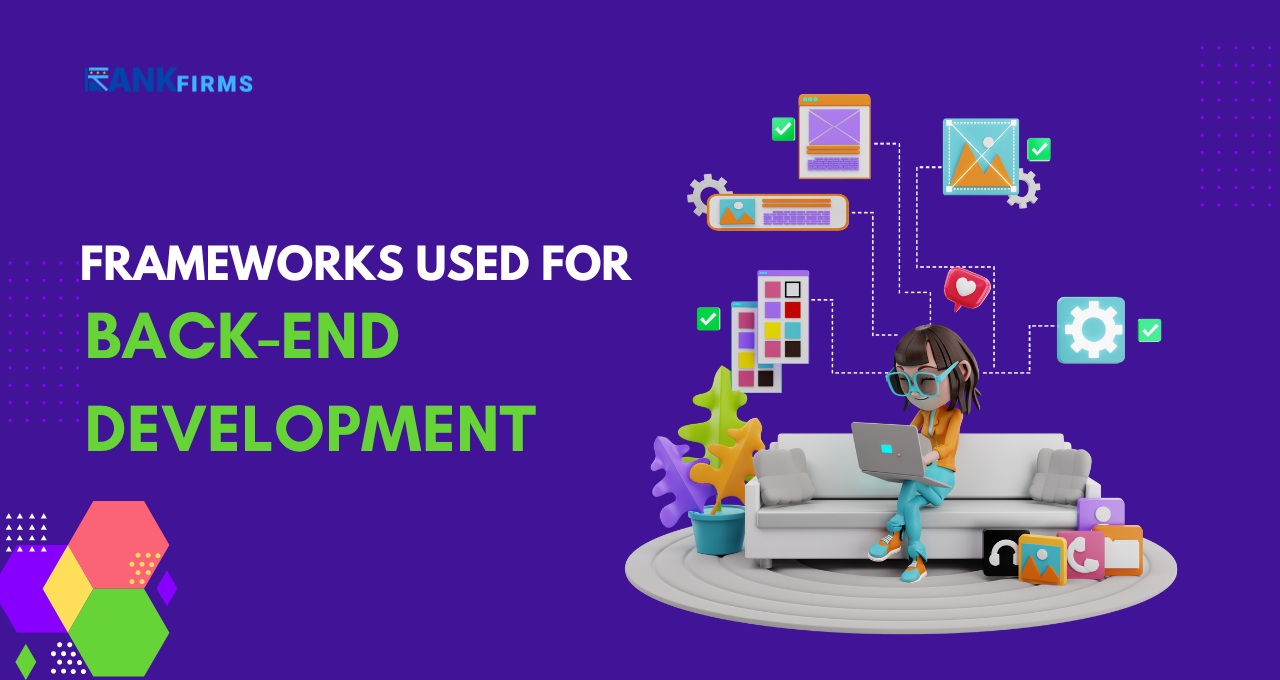Introduction to Back-End Development
Back-end development is a critical aspect of web development, focusing on the server side of applications where business logic, database interactions, and server configuration take place. While front-end development deals with the user interface and client-side interactions, back-end development ensures that the data, services, and systems supporting the front end are functional, reliable, and secure.
History of Back-End Development
The evolution of back-end development is deeply intertwined with the history of computing and the Internet:
1. Early Computing and Mainframes (1950s-1970s):
The origins of back-end development can be traced back to the era of mainframes and early computer networks. During this time, back-end processes were handled by large, centralized computers that performed complex calculations and data processing tasks.
Programming languages like COBOL and Fortran were used for back-end operations in businesses and scientific communities.
2. The Rise of Client-Server Architecture (1980s-1990s):
With the advent of personal computers and local area networks (LANs), the client-server model became popular. In this architecture, client devices interacted with centralized servers to access shared resources and data.
Languages such as C and C++ were commonly used to develop server-side applications, while SQL became the standard language for database management.
3. The Emergence of the Web (1990s-2000s):
The introduction of the World Wide Web revolutionized back-end development. Web servers like Apache and IIS were developed to handle HTTP requests and serve web content.
Scripting languages like Perl, PHP, and ASP (Active Server Pages) enabled dynamic web pages and server-side scripting, laying the foundation for interactive websites.
4. The Growth of Frameworks and APIs (2000s-2010s):
The 2000s saw the rise of web application frameworks such as Ruby on Rails, Django, and ASP.NET, which streamlined back-end development by providing structure and reusable components.
RESTful APIs and web services became essential for enabling communication between different systems and services over the Internet.
5. The Cloud and Microservices Era (2010s-Present):
Cloud computing platforms like AWS, Azure, and Google Cloud transformed back-end development by offering scalable, on-demand infrastructure and services.
The microservices architecture emerged, promoting the development of small, independent services that communicate through APIs, enhancing scalability and maintainability.
Modern back-end development increasingly involves DevOps practices, continuous integration/continuous deployment (CI/CD), and containerization technologies like Docker and Kubernetes.
How Do Back-End Technologies Work?
Back-end technologies form the backbone of web and mobile applications, managing data storage, business logic, and server-side processes that ensure seamless and efficient functioning of applications. Here’s an overview of how these technologies work:
1. Servers and Hosting
At the core of back-end technologies are servers, which are powerful computers that store, process, and manage data and application logic. Here’s how servers operate in the context of back-end development:
-
Web Servers:
These handle incoming HTTP requests from clients (browsers) and serve the appropriate content (HTML, CSS, JavaScript files). Examples include Apache, Nginx, and Microsoft IIS.
-
Application Servers:
These servers execute application code, handle business logic, and interact with databases. Examples include Node.js, Tomcat, and WebSphere.
-
Database Servers:
These store, retrieve, and manage data. They can be relational (MySQL, PostgreSQL) or non-relational (MongoDB, Redis).
Servers are hosted on physical hardware or virtualized in the cloud, enabling scalable and flexible deployment. Cloud providers like AWS, Azure, and Google Cloud offer Infrastructure as a Service (IaaS) and Platform as a Service (PaaS) solutions to simplify server management and scaling.
2. Databases
Databases are crucial for storing and managing data in an organized manner. They can be categorized into:
-
Relational Databases (RDBMS):
Use structured query language (SQL) for defining and manipulating data. Data is stored in tables with predefined schemas, ensuring data integrity and relationships. Examples include MySQL, PostgreSQL, and Oracle.
Example:
CREATE TABLE users (
id INT PRIMARY KEY,
name VARCHAR(100),
email VARCHAR(100)
);
INSERT INTO users (id, name, email) VALUES (1, ‘John Doe’, ‘john@example.com’);
- NoSQL Databases: Designed for flexible, schema-less data storage, making them ideal for handling unstructured or semi-structured data. Examples include MongoDB (document-based), Cassandra (column-based), and Redis (key-value store).
Example (MongoDB):
{
“_id”: 1,
“name”: “John Doe”,
“email”: “john@example.com”
}
Databases communicate with the application servers through database queries (SQL for relational, or other query languages for NoSQL).
3. Server-Side Languages
Server-side languages are used to write the logic that runs on the server, handling requests, processing data, and interacting with databases. Popular server-side languages include:
-
JavaScript (Node.js):
An event-driven, non-blocking I/O model that is efficient for real-time applications. Node.js allows developers to use JavaScript on both the client and server sides.
const http = require(‘http’);
const server = http.createServer((req, res) => {
res.statusCode = 200;
res.setHeader(‘Content-Type’, ‘text/plain’);
res.end(‘Hello Worldn’);
});
server.listen(3000, ‘127.0.0.1’, () => {
console.log(‘Server running at http://127.0.0.1:3000/’);
});
- Python: Known for its readability and versatility, often used with frameworks like Django and Flask for rapid development.
from flask import Flask
app = Flask(__name__)
@app.route(‘/’)
def hello_world():
return ‘Hello, World!’
if __name__ == ‘__main__’:
app.run()
-
Java:
A robust, object-oriented language widely used in enterprise environments with frameworks like Spring Boot for building scalable applications.
import org.springframework.boot.SpringApplication;
import org.springframework.boot.autoconfigure.SpringBootApplication;
import org.springframework.web.bind.annotation.GetMapping;
import org.springframework.web.bind.annotation.RestController;
@SpringBootApplication
public class Application {
public static void main(String[] args) {
SpringApplication.run(Application.class, args);
}
@RestController
class HelloController {
@GetMapping(“/”)
public String hello() {
return “Hello, World!”;
}
}
}
4. Frameworks
Frameworks provide a structured environment for developing back-end applications by offering pre-built components, tools, and best practices. Examples include:
-
Express.js (Node.js):
A minimal and flexible framework for building web applications and APIs.
-
Django (Python):
A high-level framework that promotes rapid development and clean, pragmatic design.
-
Spring Boot (Java):
Simplifies the development of production-ready Spring applications.
Frameworks help in managing routes, handling HTTP requests and responses, integrating with databases, and implementing authentication and authorization.
5. APIs (Application Programming Interfaces)
APIs enable communication between different software systems, allowing data and functionality to be shared. There are two main types:
-
RESTful APIs:
Use HTTP methods (GET, POST, PUT, DELETE) to perform operations on resources, represented as URLs.
app.get(‘/api/users’, (req, res) => {
// Code to retrieve users
});
app.post(‘/api/users’, (req, res) => {
// Code to create a new user
});
-
GraphQL:
Allows clients to request exactly the data they need, providing more flexibility compared to REST.
{
user(id: 1) {
name
}
}
APIs abstract the underlying complexity of the server and database interactions, offering a clean and consistent interface for client-side applications.
6. Security
Security is a fundamental aspect of back-end development. Common practices include:
-
Authentication:
Verifying the identity of users, typically using methods like JWT (JSON Web Tokens), OAuth, or session-based authentication.
-
Authorization:
Ensuring users have the necessary permissions to access specific resources or perform actions.
-
Data Encryption:
Protecting sensitive data by encrypting it during transmission (using HTTPS) and storage.
7. Scalability and Performance
To ensure that applications can handle increasing loads and maintain high performance, back-end systems employ various techniques:
-
Load Balancing:
Distributing incoming traffic across multiple servers to ensure no single server is overwhelmed.
-
Caching:
Storing frequently accessed data in memory (using tools like Redis or Memcached) to reduce database load and improve response times.
-
Optimized Database Queries:
Writing efficient queries and using indexing to speed up data retrieval.
Back-end technologies work together to create a seamless, efficient, and secure environment for web and mobile applications. By handling data storage, processing, and server-side logic, these technologies support the front end, enabling dynamic and interactive user experiences.
Frameworks Used for Back-End Development

Back-end frameworks provide the foundation and tools necessary to build robust, scalable, and maintainable server-side applications. These frameworks streamline the development process by offering pre-built components, libraries, and best practices, allowing developers to focus on writing application-specific logic. Here are some of the most popular frameworks used for back-end development:
1. Express.js (Node.js)
Express.js is a minimalist web framework for Node.js, known for its simplicity and flexibility. It provides a thin layer of fundamental web application features, without obscuring Node.js features that developers know and love.
-
Features:
- Middleware: Functions that execute in the request-response cycle, allowing for tasks like logging, authentication, and error handling.
- Routing: Define routes to handle HTTP requests.
- Templating: Supports various templating engines like Pug and EJS.
- Extensibility: Easily extensible with numerous plugins and libraries.
-
Example:
const express = require(‘express’);
const app = express();
app.get(‘/’, (req, res) => {
res.send(‘Hello World!’);
});
app.listen(3000, () => {
console.log(‘Server is running on port 3000’);
});
2. Django (Python)
Django is a high-level Python web framework that promotes rapid development and clean, pragmatic design. It follows the “batteries-included” philosophy, providing a wide array of built-in features and functionalities out of the box.
-
Features:
- ORM (Object-Relational Mapping): Interacts with the database using Python objects rather than writing SQL queries.
- Admin Interface: Automatically generates an admin panel for managing application data.
- Security: Built-in protection against common security threats like SQL injection, cross-site scripting (XSS), and cross-site request forgery (CSRF).
- Scalability: Supports building large-scale applications with ease.
-
Example:
from django.http import HttpResponse
from django.urls import path
from django.conf import settings
from django.core.management import execute_from_command_line
settings.configure(
DEBUG=True,
ROOT_URLCONF=__name__,
)
def index(request):
return HttpResponse(‘Hello, World!’)
urlpatterns = [
path(”, index),
]
if __name__ == ‘__main__’:
execute_from_command_line(sys.argv)
3. Spring Boot (Java)
Spring Boot is an extension of the Spring framework that simplifies the setup and development of new Spring applications. It is designed to get applications up and running quickly with minimal configuration.
-
Features:
- Dependency Injection: Manages application components and dependencies automatically.
- Auto-Configuration: Automatically configures your Spring application based on the dependencies you have added.
- Embedded Servers: Ships with embedded servers like Tomcat and Jetty, making it easy to run applications without external servers.
- Microservices Support: Ideal for building microservices with built-in support for distributed systems and cloud deployments.
-
Example:
import org.springframework.boot.SpringApplication;
import org.springframework.boot.autoconfigure.SpringBootApplication;
import org.springframework.web.bind.annotation.GetMapping;
import org.springframework.web.bind.annotation.RestController;
@SpringBootApplication
public class Application {
public static void main(String[] args) {
SpringApplication.run(Application.class, args);
}
@RestController
class HelloController {
@GetMapping(“/”)
public String hello() {
return “Hello, World!”;
}
}
}
4. Ruby on Rails (Ruby)
Ruby on Rails, often referred to as Rails, is a server-side web application framework written in Ruby. It emphasizes convention over configuration (CoC) and the don’t repeat yourself (DRY) principle.
-
Features:
- MVC Architecture: Implements the Model-View-Controller architecture, separating concerns to organize code effectively.
- ORM (ActiveRecord): Simplifies database interactions using Ruby objects.
- Scaffolding: Automatically generates boilerplate code for CRUD operations.
- Rich Ecosystem: Extensive libraries (gems) available for adding functionalities.
-
Example:
# Install Rails and create a new project
# gem install rails
# rails new myapp
# cd myapp
# Edit config/routes.rb
Rails.application.routes.draw do
root ‘welcome#index’
end
# Generate a controller
# rails generate controller Welcome index
# Edit app/controllers/welcome_controller.rb
class WelcomeController < ApplicationController
def index
render plain: ‘Hello, World!’
end
end
5. Laravel (PHP)
Laravel is a popular PHP framework known for its elegant syntax and powerful features. It provides a rich set of tools and libraries to facilitate common tasks and speed up development.
-
Features:
- Eloquent ORM: An intuitive and elegant ORM for database interactions.
- Blade Templating Engine: Simple yet powerful templating engine for views.
- Artisan CLI: Command-line interface for managing the application and performing tasks.
- Built-in Authentication: Provides scaffolding for user authentication and authorization.
-
Example:
// Install Laravel via Composer
// composer create-project –prefer-dist laravel/laravel myapp
// Edit routes/web.php
Route::get(‘/’, function () {
return ‘Hello, World!’;
});
// Start the development server
// php artisan serve
6. Flask (Python)
Flask is a micro web framework for Python, known for its simplicity and flexibility. Unlike Django, Flask is lightweight and provides only the essential components, giving developers more control over the application’s structure.
-
Features:
- Lightweight: Minimalistic core with the ability to add extensions as needed.
- Modular: Encourages building modular applications with blueprints.
- Jinja2 Templating: Uses the Jinja2 templating engine for rendering HTML.
-
Example:
from flask import Flask
app = Flask(__name__)
@app.route(‘/’)
def hello_world():
return ‘Hello, World!’
if __name__ == ‘__main__’:
app.run()
Back-end frameworks provide the necessary tools and structure to build robust and scalable server-side applications. Each framework has its unique strengths and features, catering to different programming languages and development needs. Choosing the right framework depends on factors like project requirements, language preference, and the specific needs of the application being developed.
Latest Languages Used for Back-End Development

The landscape of back-end development is constantly evolving, with new programming languages and advancements in existing ones regularly emerging. Here are some of the latest and most popular languages used for back-end development, each offering unique features and benefits:
Go (Golang)
Go, also known as Golang, was developed by Google to address issues of scalability and productivity in large-scale software development. It is designed for performance and efficiency, making it an excellent choice for modern back-end systems.
-
Key Features:
Performance: Compiled language with high execution speed, comparable to C and C++.
Concurrency: Built-in support for concurrent programming through goroutines and channels, enabling efficient handling of multiple tasks.
Simplicity and Efficiency: Simple syntax and garbage collection streamline development and memory management.
-
Example:
package main
import (
“fmt”
“net/http”
)
func helloWorld(w http.ResponseWriter, r *http.Request) {
fmt.Fprintf(w, “Hello, World!”)
}
func main() {
http.HandleFunc(“/”, helloWorld)
http.ListenAndServe(“:8080”, nil)
}
4. Kotlin
Kotlin is a modern, statically typed programming language that runs on the Java Virtual Machine (JVM). Developed by JetBrains, it is fully interoperable with Java and is increasingly used for server-side development.
-
Key Features:
Interoperability with Java: Can be used alongside existing Java code, leveraging the vast ecosystem of Java libraries and frameworks.
Concise Syntax: Reduces boilerplate code, improving readability and maintainability.
Null Safety: Reduces the risk of null pointer exceptions, enhancing code reliability.
-
Example:
import io.ktor.application.*
import io.ktor.http.*
import io.ktor.response.*
import io.ktor.routing.*
import io.ktor.server.engine.embeddedServer
import io.ktor.server.netty.Netty
fun main() {
embeddedServer(Netty, port = 8080) {
routing {
get(“/”) {
call.respondText(“Hello, World!”, ContentType.Text.Plain)
}
}
}.start(wait = true)
}
Elixir
Elixir is a functional, concurrent, general-purpose programming language built on the Erlang VM (BEAM). It is designed for building scalable and maintainable applications, particularly real-time systems.
-
Key Features:
- Concurrency: Leverages the Erlang VM’s capabilities for handling thousands of concurrent processes with minimal overhead.
- Fault Tolerance: Inherits Erlang’s robust fault-tolerance features, making it ideal for building resilient systems.
- Scalability: Optimized for distributed systems and real-time applications, such as chat services and IoT.
-
Example:
defmodule HelloWorld do
use Plug.Cowboy
def start(_type, _args) do
Plug.Cowboy.http HelloWorld, []
end
def init([]), do: []
def call(conn, _opts) do
Plug.Conn.send_resp(conn, 200, “Hello, World!”)
end
end
# To run the server, use the following command:
# iex -S mix run –no-halt
The latest languages used for back-end development offer a range of features that cater to different needs, from performance and concurrency to simplicity and interoperability. Choosing the right language depends on the specific requirements of the project, the existing technology stack, and the development team’s expertise. These modern languages and their ecosystems enable developers to build robust, scalable, and efficient back-end systems that meet the demands of today’s applications.
Also Read
Web Applications Supported By Back-End Technologies

Back-end technologies are fundamental to the functioning of various types of web applications, providing the necessary infrastructure for data management, business logic, security, and performance optimization. Here are some key categories of web applications supported by back-end technologies:
1.E-Commerce Applications
E-commerce applications handle online transactions, manage product inventories, process payments, and support customer interactions. Back-end technologies manage databases to store product information, user accounts, order histories, and payment details.
-
Key Back-End Requirements:
- Secure data storage and transactions
- Efficient product and order management
- Real-time inventory updates
- Integration with payment gateways
- Scalability to handle traffic spikes during sales events
-
Examples:
- Amazon
- eBay
- Shopify
2. Content Management Systems (CMS)
CMS platforms allow users to create, manage, and publish digital content without deep technical knowledge. Back-end systems in CMS platforms handle data storage, user roles, and content workflows.
-
Key Back-End Requirements:
- User authentication and authorization
- Content storage and retrieval
- Workflow management for content approval
- SEO-friendly URL management
- Extensible plugin architecture
-
Examples:
- WordPress
- Joomla
- Drupal
3. Social Media Platforms
Social media platforms facilitate user interactions, content sharing, and real-time communication. The back end handles user data, posts, comments, likes, and real-time notifications.
-
Key Back-End Requirements:
- Real-time data processing and updates
- Secure user data management
- Efficient handling of high-volume interactions
- Content moderation tools
- Scalable infrastructure for rapid user growth
-
Examples:
4. Online Banking and Financial Services
Financial applications require robust back-end systems to ensure secure, reliable, and fast processing of financial transactions. These applications must comply with stringent security and regulatory standards.
-
Key Back-End Requirements:
- High security and encryption standards
- Transaction processing and logging
- User account management
- Fraud detection and prevention
- Compliance with financial regulations
-
Examples:
- PayPal
- Stripe
- Square
5. Healthcare Applications
Healthcare applications manage patient data, appointment scheduling, telemedicine services, and electronic health records (EHR). Back-end systems ensure the secure handling and storage of sensitive health information.
-
Key Back-End Requirements:
- HIPAA compliance for data security
- Secure patient record management
- Real-time data synchronization across devices
- Integration with third-party medical services
- Scalability to support telemedicine
-
Examples:
- Practo
- Teladoc
- Epic Systems
6. Educational Platforms
Educational platforms provide online learning, course management, and student-teacher interactions. The back end manages course content, user data, assessments, and communication tools.
-
Key Back-End Requirements:
- Secure and scalable data storage
- User authentication and role management
- Real-time collaboration tools
- Integration with video conferencing services
- Analytics for tracking progress and performance
-
Examples:
- Coursera
- Khan Academy
- Moodle
7. On-Demand Services
On-demand service applications connect users with various service providers, such as ride-sharing, food delivery, and home services. Back-end technologies manage user requests, service provider data, and real-time updates.
-
Key Back-End Requirements:
- Real-time tracking and updates
- Efficient matching algorithms for service providers
- Secure payment processing
- User and provider data management
- Scalable infrastructure to handle peak usage
-
Examples:
- Uber
- Lyft
- DoorDash
Conclusion
In the ever-evolving landscape of web development, back-end technologies serve as the backbone, enabling a wide range of web applications to function efficiently and securely. From e-commerce and social media platforms to healthcare and on-demand services, the back end manages critical aspects like data storage, business logic, security, and scalability. The choice of back-end technologies and frameworks, such as Express.js, Django, Spring Boot, and others, depends on the specific requirements of the application and the goals of the development team.
As web applications become more complex and user expectations rise, the importance of robust and reliable back-end systems continues to grow. Staying updated with the latest languages, frameworks, and best practices in back-end development is essential for building applications that are not only functional but also scalable, secure, and performant. Thus, back-end technologies remain a cornerstone of modern web development, driving innovation and enhancing user experiences across various domains.
Recommended Articles
- https://www.rankfirms.com/front-end-technologies/
- https://www.rankfirms.com/agency/online-advertising-companies/
- https://www.rankfirms.com/agency/automotive-advertising-agencies/
- https://www.rankfirms.com/outsourcing-react-native-development/
- https://www.rankfirms.com/recruiting-flutter-development-company/







